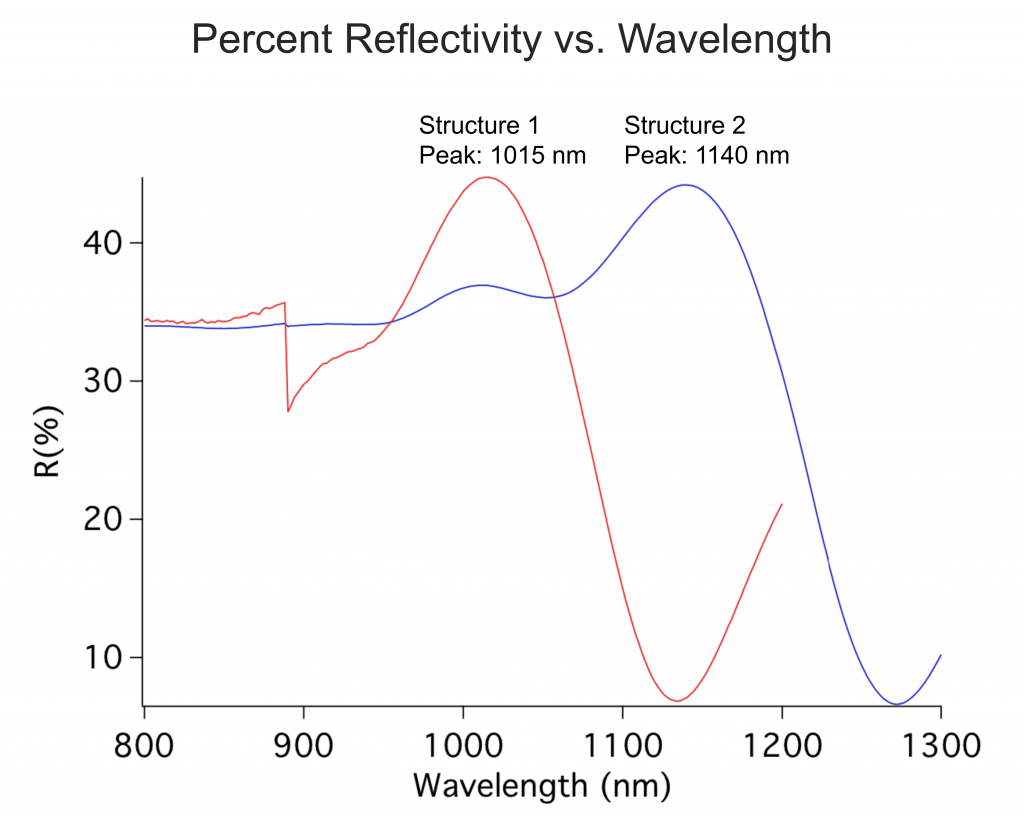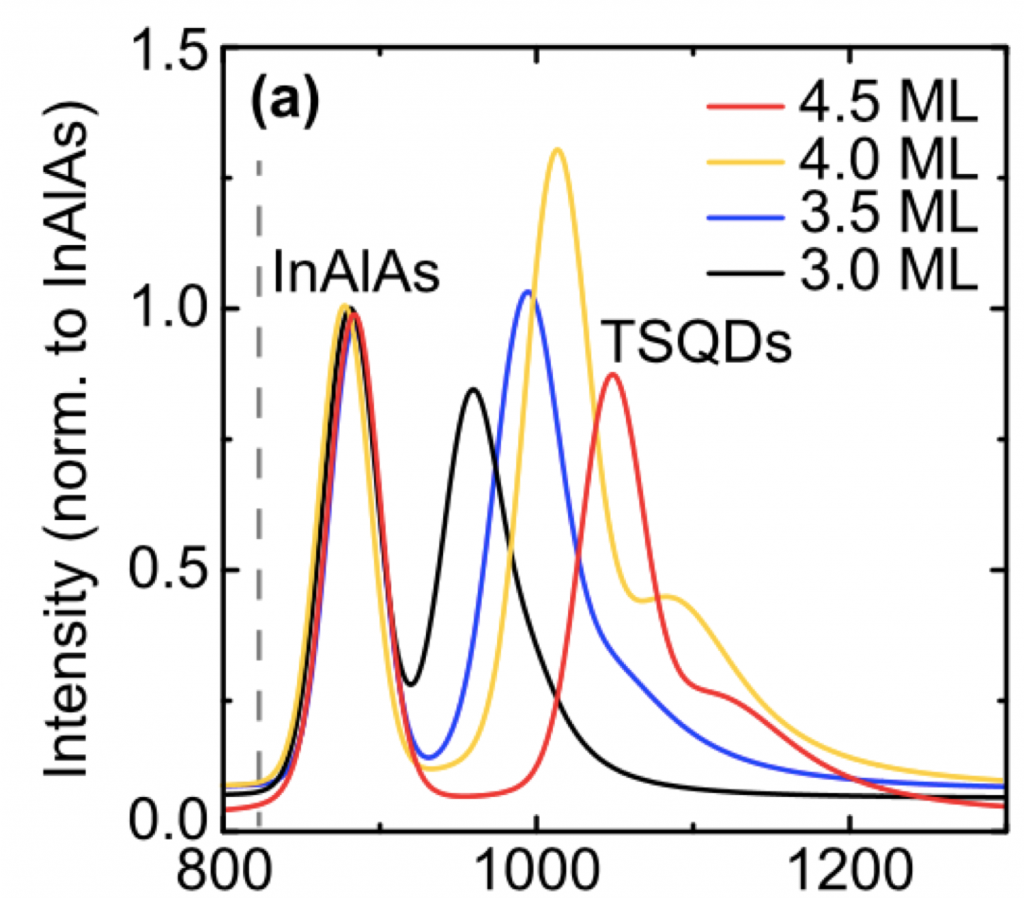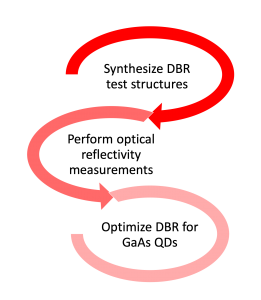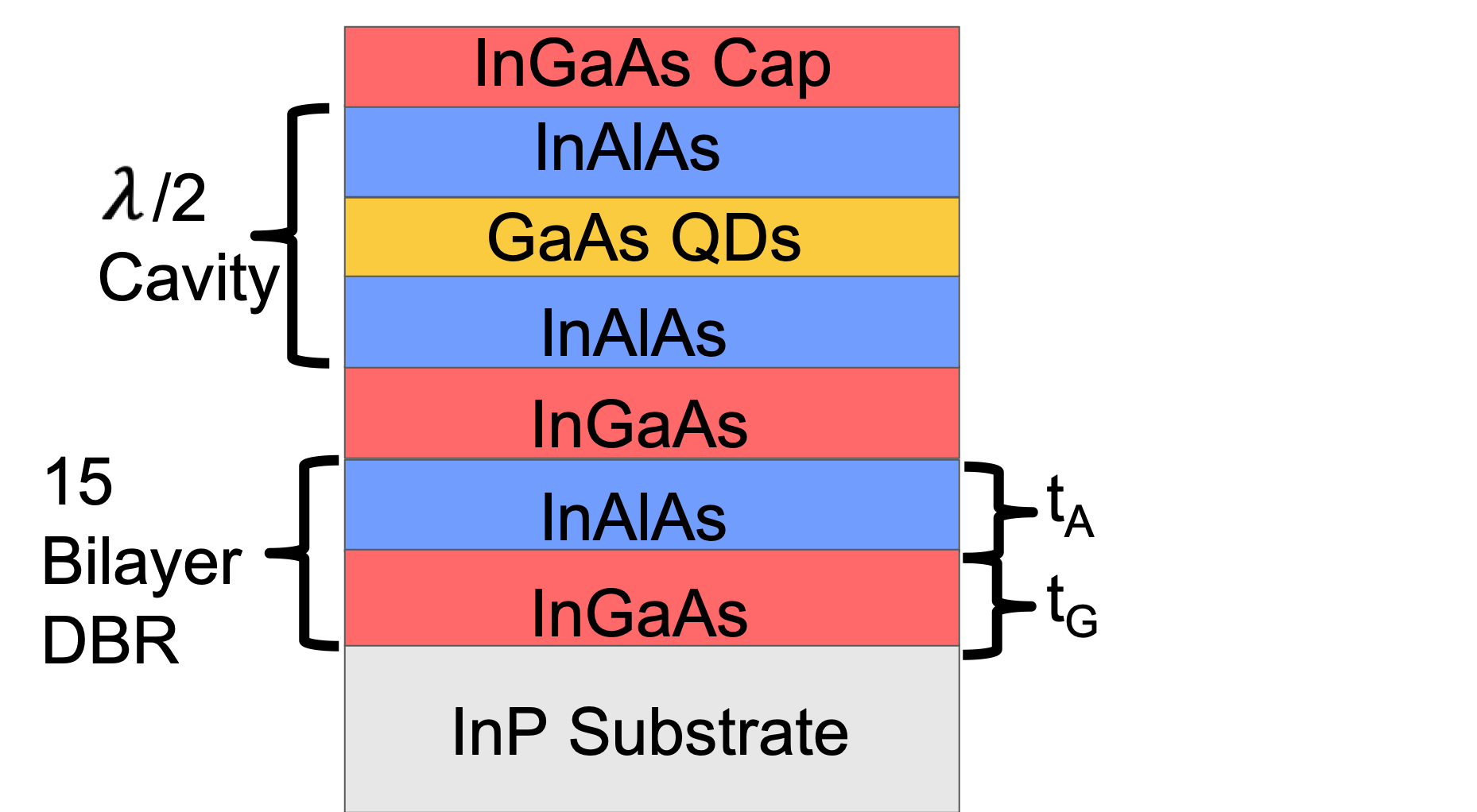Ariel Eden Weltner, Dr. Christopher F. Schuck, Kevin D. Vallejo, Kathryn E. Sautter, Trent A. Garrett, Dr. Kevin Silverman, Dr. Galan Moody, Dr. Paul Simmonds

Distributed Bragg reflectors (DBRs) designed to improve photon collection from GaAs quantum dots

Background
Quantum dots (QDs) are small islands of material that emit light (Fig. 1). When made from GaAs, these QDs are useful for devices such as LEDs and lasers. Our goal is to improve the collection efficiency of QD light, to optimize it for these devices.

Methods

- Synthesize DBR test structures
- Perform optical reflectivity measurements
- Optimize DBR for GaAs QDs
Results
| Category | Structure 1 | Structure 2 |
|---|---|---|
| InAlAs Thickness | 74.63 | 83.11 nm |
| InGaAs Thickness | 68.19 nm | 75.63 nm |
| Target Peak | 1000 nm | 1100 nm |
| Experimental Peak | 1015 nm | 1140 nm |
Two test structures were made (see Figure 2), each reflecting different light wavelengths. We need to choose the structure that best reflects the light from our QDs.

- Test structures contained only 6 BLs
- The DBR will improve collection efficiency by reflecting photons that have been emitted down towards the substrate up and into a detector.
Conclusions
The central figure shows the peak wavelength of Structure 1 is best aligned with our QD emission wavelengths (Figure 1). Next steps include growing a full DBR structure with GaAs QDs.
References
- [1] C. F. Schuck et al., J Vac Sci Technol B 36, 031803 (2018). doi: 10.1116/1.5018002
Additional Information
For questions or comments about this research, contact Ariel Weltner at arielweltner@u.boisestate.edu.